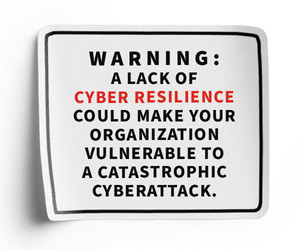The backbone of any good cyber resilience strategy is an incident response plan that all members of the IT security team and beyond know how to carry out effectively. These plans help get institutions up and running quickly after an attack with minimal disruption to operations. Recovering from a cyberattack can be costly in terms of time, money and data, but knowing how to respond quickly and nimbly can help institutions recover with minimal damage.
In addition to their usefulness in recovering from cyberattacks, incident response plans also are typically required by cyber insurance companies. Carriers can deny coverage or hike up the premiums for institutions that cannot demonstrate a plan to respond to cyberattacks.
For IT teams that don’t know how to begin crafting an incident response plan, third-party services, such as those offered by CDW, can help. Having a trusted partner on your side to respond when needed can be the difference between a quick recovery and detrimental downtime.
Understaffed IT Departments Could Lead to Cybersecurity Gaps
In many cases, colleges and universities of all sizes do not have incident response plans in place because they simply don’t have the staff to manage another IT initiative, or the staff they do have lacks the technical know-how to put one in place.
DISCOVER: Should higher ed be worried about the future of cyber insurance?
For financially strapped higher education institutions, the cost of additional employees or continuing education and training for existing employees might not always be feasible. But the expense of a cyberattack could exceed the cost of a properly staffed and trained security team.
At CDW, we work with institutions of all sizes to help develop incident response plans, even in the most understaffed IT departments. Through our staff augmentation services, we can even help supplement IT departments with trained professionals. These experts can step in to help manage day-to-day cybersecurity operations, monitor an institution’s environment after hours or spring into action when incident response is needed. Our experts can also conduct tabletop exercises to ensure that everyone on your team knows how to respond in the event of a cyberattack.
Cyber resilience is not as simple as selecting products off the shelf to keep an institution safe, but with input from third-party experts such as those at CDW, colleges and universities can be as prepared as possible to respond to and recover from cyberattacks.
This article is part of EdTech: Focus on Higher Education’s UniversITy blog series.















